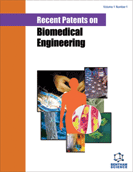Abstract
The requirement for bone tissue grafting exists in a wide range of clinical conditions involving surgical reconstruction, following trauma or other pathological conditions, particularly in the limbs, spine and skull. The amount of bone tissue required for grafting and the destination of the graft material affect the origin of the grafting material. There are serious disadvantages in the use of various grafting sources, such as autografts, allografts and inorganic bone substitutes. The possibility of enhanced generation of a sufficient amount of autologous metabolically active bone, with high bone inductive and bone conductive properties, for implantation should resolve the difficulties and complications of the currently used bone grafting techniques. For this purpose, several methods based on bone generating cells implantation on osteoinductive matrices in vivo and in vitro were proposed and submitted for patent registration. Several patents describe the possibility for autologous bone grafting material generation, either in vitro, from bone generating cells cultured on inorganic matrix prior to implantation, or by direct implantation of mesenchymal cells into the bone gap in vivo. Currently there is not enough evidence as to which approach is advantageous for a clinical use. The reason for this uncertainty is the lack of clinical experimental data for both methods.
Keywords: Bone, bone graft, bone regeneration, in vitro, in vivo, mesenchymal stem cells, tissue engineering, osteoblast
 9
9

